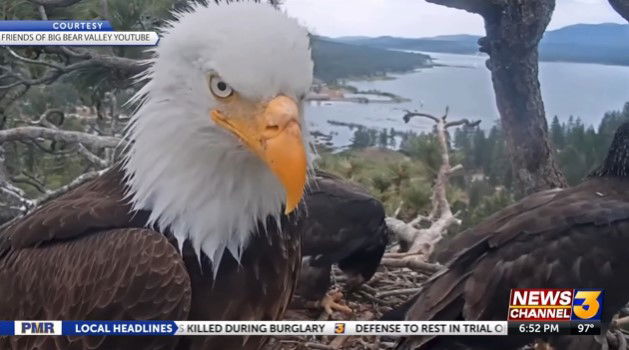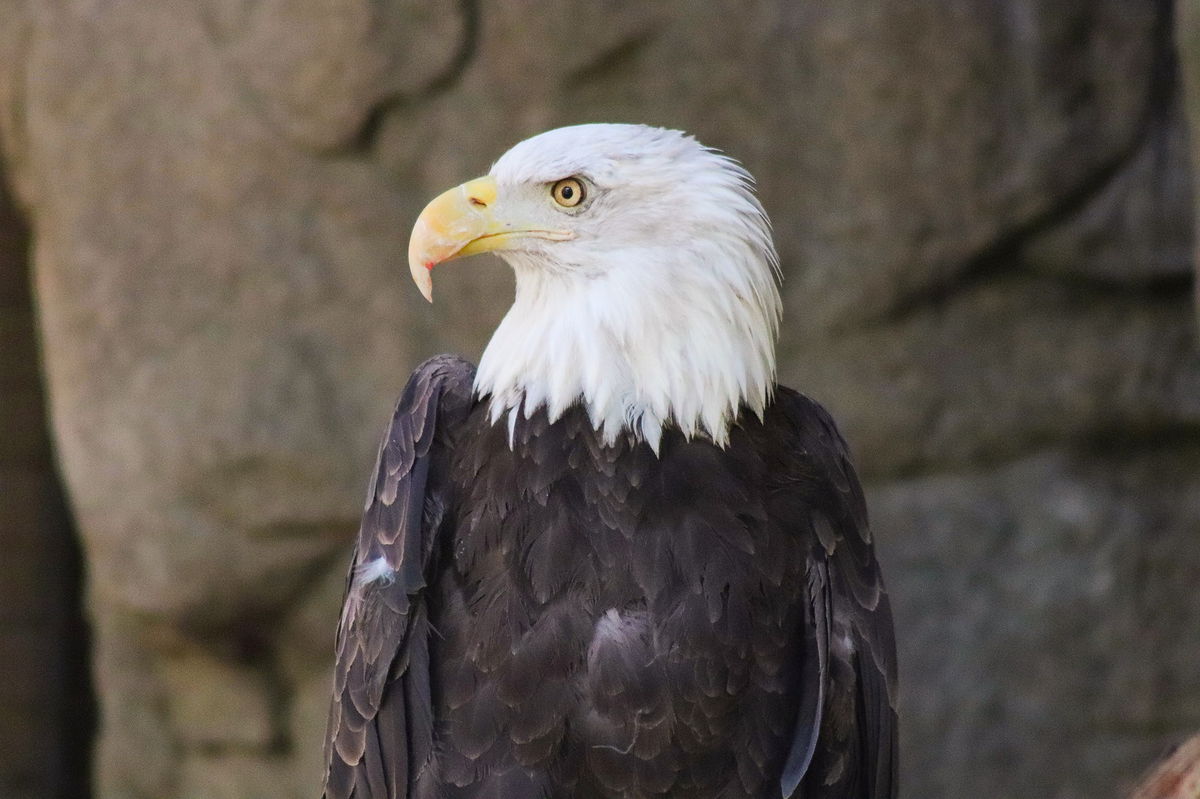Soaring Success: Bald eagle nest livestream helping conservation efforts
BIG BEAR LAKE, Calif. — After months of anticipation and worldwide attention, one of the two baby bald eagles nesting in Big Bear has officially taken flight.
Sunny, the older of two eaglets hatched earlier this year on the Friends of Big Bear Valley’s live nest cam, recently spread her wings and soared for the first time—marking a major milestone in the livestream saga that has captured hearts around the globe.
Her younger sibling, Gizmo, is not far behind.
The pair of eaglets have been under near-constant watch from fans around the world since their hatching earlier this spring. Perched high in a Jeffrey pine tree above the north shore of Big Bear Lake, the nest has become a symbol of wildlife recovery and a testament to the power of conservation livestreaming.
One of those keeping a close eye on their progress is Dr. James Daniel-Burg, a conservationist with The Living Desert Zoo and Gardens in Palm Desert.
“Everybody watches those cameras!” Dr. Daniel-Burg laughed when asked if he’s been following the livestream.

Sunny’s leap was met with cheers and even tears by some viewers. Gizmo, seen looking curious and slightly bewildered by her sister’s newfound freedom, is expected to take her own first flight any day now.
“Very often what we do find is that there’ll be one individual that is the dominant in the nest and they get the majority of the feeding,” explained Dr. Daniel-Burg. “And so as a consequence, they grow fast as they get biggest and can be more successful with their flying sooner than their nest mates, almost always.”
The livestream has served more than just entertainment. Conservationists point to it as a valuable educational tool—one that gives people a deeply personal look at an iconic species once on the brink of extinction.
“The great thing about cameras are that they provide a window into the life of the animals,” said Dr. Daniel-Burg. “So you see the animals not as a species, not as bald eagles--we see them as individuals. We see them caring for their babies. We see them covered with snow, knocking the snow off the eggs so that they can continue to incubate them. So we get that personal connection."
Viewers have watched the eagle parents, Jackie and Shadow, protect their eggs through snowstorms, daily feedings with fresh fish from Big Bear Lake, and now, prepare them to fly on their own.
Sunny and Gizmo will keep growing--eventually becoming some of the largest birds in North America.
“They are huge… they’ll probably be six to eight feet wide from tip to tip when they’re fully adult,” Dr. Daniel-Burg said. “They’re quite large. They’re the largest raptor that we have in North America.”

After his initial flight Monday, Sunny returned to the nest Tuesday, sharing a meal with mom and dad and little sister Gizmo.
While Sunny and Gizmo could eventually migrate, experts say they may not go far from the forests of the San Bernadino Mountains.
“If there’s not a lot of competition around Big Bear she’d probably stay there,” Dr. Daniel-Burg explained. “You know why move a long ways when you can stay close to home?”
Bald eagles typically don’t develop their iconic white head feathers until they’re about three to four years old. They usually begin nesting and raising families of their own around the age of four or five. But Dr. Daniel-Burg says don't expect the kids to take over mom and dad's nest. Jackie and Shadow will continue to return to the nest; and when Sunny and Gizmo gradually reach reproduction age, they'll find a mate and build their own new nest. Perhaps nearby?
For those hoping to catch a glimpse of these official national birds in the wild, there’s always a chance. The San Bernardino Mountains sit along one of the world’s largest migratory flyways, and many eagles call the area home year-round.
In the meantime, fans are waiting patiently for Gizmo, who was born four days after Sunny, to take her first flight.
While the Big Bear nest livestream shines a spotlight on bald eagles, there are a number of local conservation efforts here in the Coachella Valley, too.
At The Living Desert Zoo and Gardens, dozens of wildlife rehabilitation and habitat restoration programs are underway—including caring for “Captain Nemo,” a bald eagle rescued from Alaska after a serious wing injury.

Unfortunately, Captain Nemo won’t fly again, but he'll live a nice, long life at the zoo’s “Eagle Canyon” exhibit, where visitors can see him and other injured birds up close.
Bald eagles in the wild typically live 20 to 30 years, but if they do get injured, facilities like The Living Desert play an important role in helping animals recover.
You can watch the nest live camera on YouTube.




